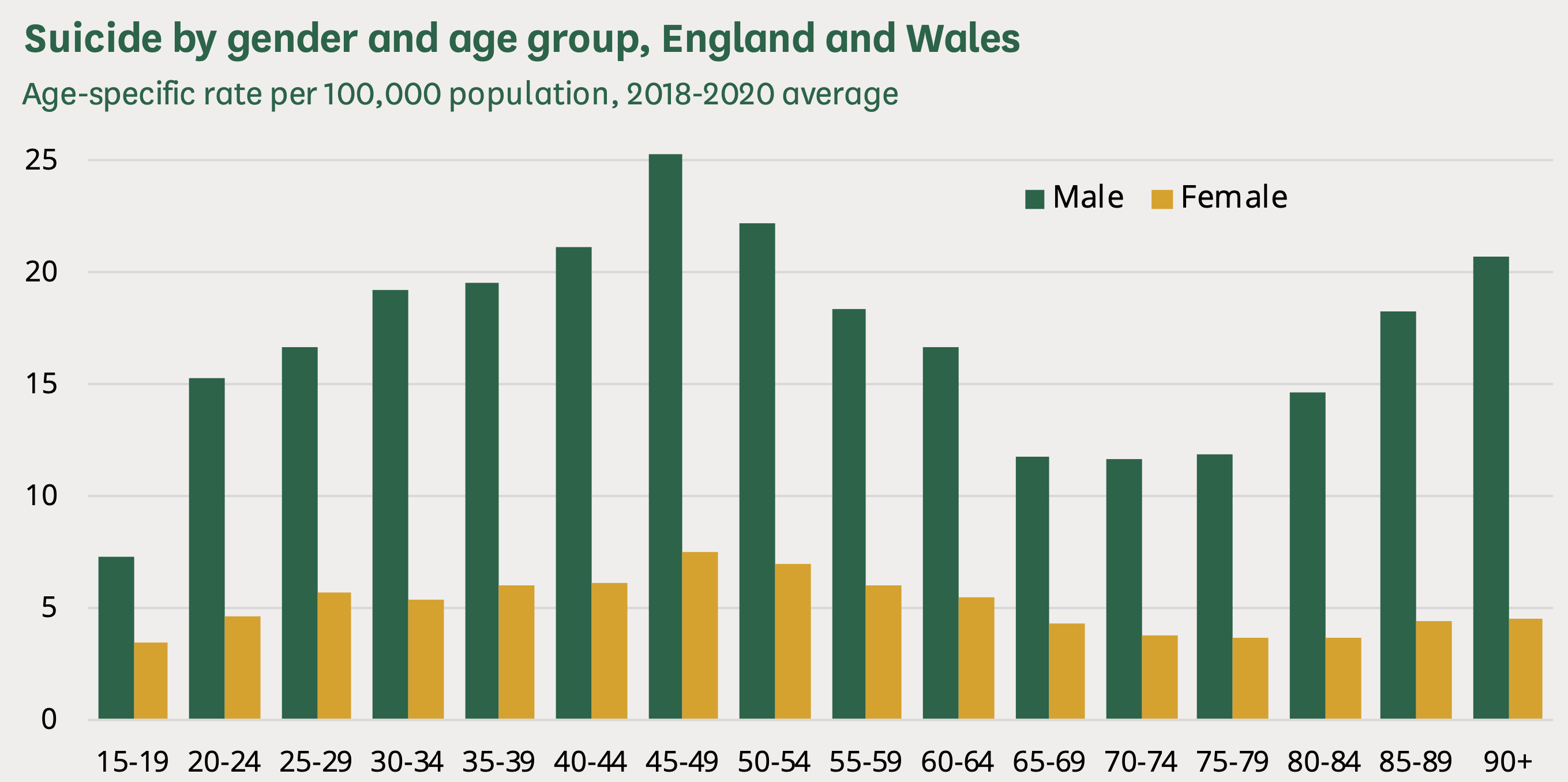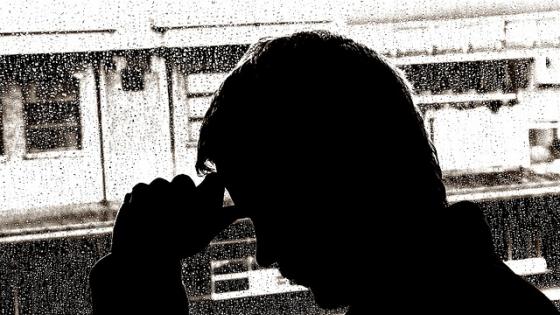In 2015, Anne Case and Angus Deaton published a now famous but initially controversial article in the prestigious scientific journal the Proceedings of the National Academy of Sciences (Case and Deaton 2015a). In it, the authors introduced the world to the concept of ‘deaths of despair’, a term that has today passed into standard usage in public debate. The authors showed that large numbers of white, midlife, low-education American citizens seemed to be dying prematurely in what looked like accidental or deliberately self-destructive actions (particularly in the form of overdoses). The authors did not present data on ‘despair’, perhaps surprisingly, but instead argued that such despair was implicitly revealed by people’s actions in harming themselves (see also, for example, Gaydosh et al. 2019, Mulligan 2021, Case and Deaton 2015b, Oswald 2012).
That classic Case-Deaton article is hugely cited. There is continuing discussion, however, about the extent to which the US deaths-of-despair phenomenon is special or temporary – and whether it reflects an inherent midlife psychological-low condition that is common in human beings. On this emotive issue, three literatures overlap:
- an economics and behavioural-science literature on the idea that subjective wellbeing may be U-shaped through life;
- the original Case-Deaton-inspired modern social-science and medical literature on the idea that white, low-education American men in midlife are currently experiencing new levels of psychological despair; and
- a much older psychotherapy literature on the idea that human beings have a midlife crisis.
In new research (Giuntella et al. 2022), we argue that the human midlife crisis is real and fundamental. Our data cover a large number of deliberately extreme measures of mental distress in a variety of industrialised nations. We point out an unsolved scientific puzzle that extends far beyond US data: mental distress and suicidal behaviour seem to peak in people’s late 40s or early 50s. This is a remarkable paradox – especially for economists – because that is when people’s earnings tend to be near their lifetime maximum (Bhuller et al. 2017). Moreover, at that stage of life in rich countries, only a small proportion of citizens have experienced serious health problems. So it would be expected that middle-aged citizens in the developed world should have extremely pleasurable and cushioned lives. Yet that is not what the data show.
Within the economics and behavioural-science literature, there has been much debate. This style of work, which is predominantly cross-sectional, appears particularly in economics and certain kinds of social-science journals (e.g. Blanchflower and Oswald 2008, Graham and Pozuelo 2017). It explores the claim that the mean level of life satisfaction and contentment may follow a convex quadratic equation (a U-shape) over the bulk of the lifespan.
Consistent with this supposed U-shape in subjective wellbeing, there is also growing evidence that old age helps human beings have fewer regretful emotions (Charles et al. 2003). One of the few pieces of genuine longitudinal evidence examined the mean levels of life satisfaction rather than extreme distress (Cheng et al. 2017). Another identified one aspect of the U-shape (Van Landeghem 2012). Non-technical books have also appeared on this topic (Setiya 2017, Rauch 2018).
The notion of a midlife low point is not generally accepted by psychologists. An early review paper (Diener et al. 1999) concluded that wellbeing is approximately flat throughout the lifespan. Such scholars argue that midlife is a time of high satisfaction (Mroczek and Spiro 2005); that, at best, only low-income individuals experience a U-shape (Lang et al. 2011). Others conclude that the cross-sectional U-shape is simply illusory (Galambos 2020, Frijters and Beatton 2012).
Second, researchers have documented rising levels of mental distress among particular groups of US citizens, especially white midlife Americans with few educational qualifications (Graham 2017, Gaydosh 2019, Daly 2022). There has been debate about this hypothesis (Goldman et al. 2018). To our knowledge, the literature generally views the American trend as recent, distinct, and unusual.
In a third and earlier literature, there is discussion about the psychological concept of a ‘midlife crisis’ in humans, a term adopted by Elliott Jaques (1965) in an article published in a psychotherapy journal. Jaques argued that in midlife a human being is forced to come to terms, painfully, with the certainty of his or her own eventual mortality. Most psychologists since then have treated the notion of a midlife crisis with extreme scepticism (Wethington 2000, Freund and Ritter 2009, Galambos et al. 2020) – and even, occasionally, derision. Lachman (2015), however, calls persuasively for more research on these issues.
Figure 1 is a simple example of how, in the UK, suicide risk reaches its highest level in people’s late 40s.
Figure 1 Suicide rates by age in England and Wales
Source: Office for National Statistics data
Yet, our study findings go much further than such patterns shown in Figure 1. We go beyond cross-sectional analyses based on simple measures of subjective wellbeing (for example, Graham and Pozuelo 2017) and control for other influences and cohort effects. Using eight different measures, we document longitudinal evidence of extreme distress among middle-aged adults in many affluent countries and suggest that the human midlife crisis seems to be an important and under-recognised phenomenon.
In introducing the term, Jaques (1965) offered anecdotal evidence and psychoanalytic arguments for the midlife crisis; our evidence supports the notion. An approximate hump-shape in severe distress over the life cycle emerges in data on:
- suicide
- sleeping problems
- extreme depression
- intense job strain
- disabling headaches
- suicidal feelings
- concentration and memory problems
- alcohol dependence
As far as we know, our recurring longitudinal patterns – a collection of complementary types of evidence – are not widely known by policymakers.
Explanations for the midlife shape currently remain open. Could our empirical findings be the product of the stresses of having dependent children? Could they be a country-specific or new phenomenon, something to do with selection effects, or an illusion caused by cohort effects? These are natural and important possibilities. Nevertheless, the balance of our evidence appears to suggest none of the above.
It also does not seem that the midlife shape is caused by envy of others. The notion of unmet aspirations as part of the explanation does, however, have intuitive appeal in our judgement (see particularly Schwandt 2016). There is some published evidence of a midlife psychological low in chimpanzees and orangutans (Weiss et al. 2012) – so sheer ageing biology in primates may play a role. That would take the ultimate explanation out of the social sciences and into the natural sciences. Much is still to be understood.
We believe the seriousness of this societal problem – the unexplained misery of the middle-aged in rich countries – has not been grasped by the affluent world’s policymakers.
References
Bhuller, M, M Mogstad, and K G Salvanes (2017), “Life-cycle earnings, education premiums, and internal rates of return”, Journal of Labor Economics 35: 993–1030.
Blanchflower, D G, and A J Oswald (2008), “Is well-being U-shaped over the life cycle?”, Social Science and Medicine 66: 1733–49.
Case, A, and A Deaton (2015a), “Rising morbidity and mortality in midlife among white non-Hispanic Americans in the 21st century”, Proceedings of the National Academy of Sciences 112(49): 15078–83.
Case, A, and A Deaton (2015b), “Suicide and happiness”, VoxEU.org, 18 July.
Charles, S T, M Mather, and L LCarstensen (2003), “Aging and emotional memory: The forgettable nature of negative images for older adults”, Journal of Experimental Psychology – General 132(2): 310–24.
Cheng, T, N Powdthavee, and A J Oswald (2017), “Longitudinal evidence for a midlife nadir in human well-being: Results from four data sets”, Economic Journal 127(599): 126–42.
Daly, M (2022), ““Prevalence of psychological distress among working-age adults in the US, 1999–2018”, American Journal of Public Health 112: 1045–49.
Diener, E, E M Suh, R E Lucas, H LSmith (1999), “Subjective well-being: Three decades of progress”, Psychological Bulletin 125(2): 276–302.
Freund, A M, and J O Ritter (2009), “Midlife crisis: A debate”, Gerontology 55: 582–91.
Frijters, P, and T Beatton (2012), “The mystery of the U-shaped relationship between happiness and age”, Journal of Economic Behavior and Organization 82: 525–42.
Galambos, N L, H J Krahn, M D Johnson, and M E Lachman (2020), “The U shape of happiness across the life course: Expanding the discussion”, Perspectives on Psychological Science 15: 898–912.
Gaydosh, L, R A Hummer, T W Hargrove, C T Halpern, J M Hussey, E A Whitsel, N Dole, and K M Harris (2019), “The depths of despair among US adults entering midlife”, American Journal of Public Health 109(5): 774–80.
Giuntella, O, S McManus, R Mujcic, A J Oswald, N Powdthavee, and A Tohamy (2022), “The midlife crisis”, IZA Discussion Paper 15533.
Goldman, N, D A Glei, and M Weinstein (2018), “Declining mental health among disadvantaged Americans”, Proceedings of the National Academy of Sciences 115: 7290–95.
Graham, C (2017), Happiness for all? Unequal hopes and lives in pursuit of the American Dream, Princeton and Oxford: Princeton University Press.
Graham, C, and J R Pozuelo (2017), “Happiness, stress, and age: How the U-curve varies across people and places”, Journal of Population Economics 30(1): 225–64.
Jaques, E (1965), “Death and the mid-life crisis”, International Journal of Psychoanalysis 46: 502–14.
Lachman, M E (2015), “Mind the gap in the middle: A call to study midlife”, Research in Human Development 12: 327–34.
Lang, I A, D J Llewellyn, R E Hubbard, K M Langa, and D Melzer (2011), “Income and the midlife peak in common mental disorder prevalence”, Psychological Medicine 41: 1365–72.
Mroczek, D K, and A Spiro III (2005), “Change in life satisfaction during adulthood: Findings from the Veterans Affairs normative aging study”, Journal of Personality and Social Psychology 88(1): 189–202.
Mulligan, C (2021), “Deaths of despair and the incidence of excess mortality in 2020”, VoxEU.org, 28 January.
Oswald, A J (2012), “The midlife crisis in humans and other apes”, VoxEU.org, 5 December.
Rauch, J (2018), The happiness curve: Why life gets better after midlife, London: Green Tree.
Schwandt, H (2016), “Unmet aspirations as an explanation for the age U-shape in wellbeing”, Journal of Economic Behavior and Organization 122(1): 75–87.
Setiya, K (2017), Midlife: A philosophical guide, Princeton: Princeton University Press.
Van Landeghem, B (2012), “A test for the convexity of human well-being over the life cycle: Longitudinal evidence from a 20-year panel”, Journal of Economic Behavior and Organization 81(2): 571–82.
Weiss, A, J E King, M Inoue-Murayama, T Matsuzawa, and A J Oswald (2012), “Evidence for a midlife crisis in great apes consistent with the U-shape in human well-being”, Proceedings of the National Academy of Sciences 109(49): 19949–52.
Wethington, E (2000), “Expecting stress: Americans and the midlife crisis”, Motivation and Emotion 24: 85–103.








